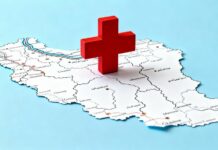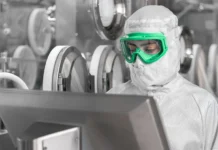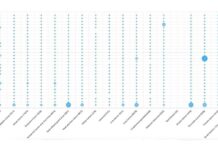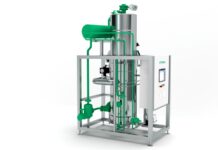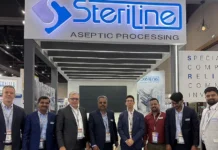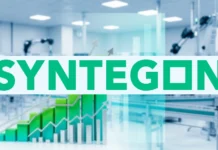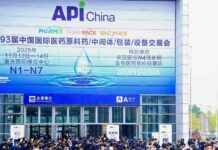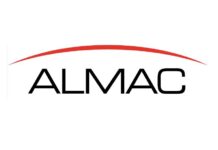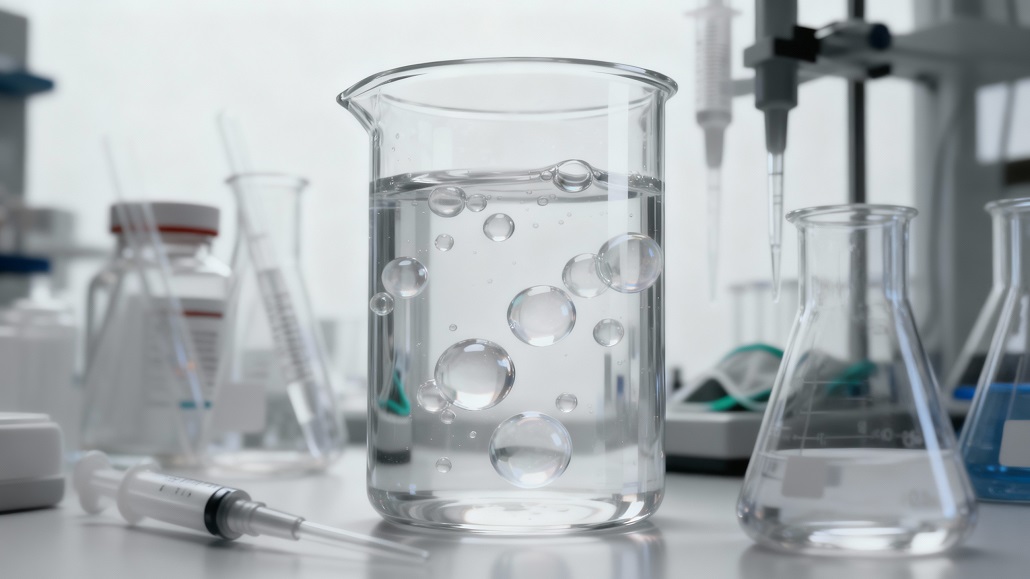Advances in Lipid-Based Drug Formulation for Solubility Enhancement
The pharmaceutical industry faces a persistent challenge that threatens to derail promising drug candidates before they reach patients. Poor aqueous solubility afflicts over 70% of new molecular entities in development pipelines, creating formidable obstacles to achieving therapeutic efficacy. Lipid based drug formulation has emerged as a powerful strategy to overcome these solubility limitations, offering versatile platforms that enhance bioavailability, improve stability, and enable successful development of otherwise unmarketable compounds.
Understanding the Solubility Crisis in Drug Development
Approximately 40% of lipophilic drug candidates demonstrating excellent pharmacological activity fail to reach market because low aqueous solubility compromises bioavailability and results in poor pharmacokinetic performance. This trend shows no sign of abating as drug discovery increasingly focuses on complex molecular structures with enhanced specificity and potency, characteristics often accompanied by reduced water solubility.
The biopharmaceutical classification system categorizes drugs based on solubility and permeability characteristics. Class II drugs, which exhibit low solubility but high permeability, represent a particularly prevalent challenge. Class IV drugs compound the problem with both low solubility and low permeability. For these problematic categories, conventional formulation approaches frequently prove inadequate, leaving formulation scientists searching for innovative solutions.
The fundamental issue stems from the requirement that drugs must dissolve in gastrointestinal fluids before absorption can occur. When a drug demonstrates insufficient aqueous solubility, the amount dissolved may fall below the concentration needed for therapeutic effect. Even potent compounds with excellent target affinity provide no clinical benefit if they cannot reach systemic circulation in adequate concentrations. This dissolution-limited absorption represents a rate-limiting step that lipid based drug formulation specifically addresses.
Lipid-Based Formulation Platforms
Lipid based drug formulation encompasses a diverse array of systems united by their incorporation of lipidic excipients. These formulations range from simple solutions of drugs in oils to sophisticated self-emulsifying systems that spontaneously form fine emulsions upon contact with aqueous gastrointestinal fluids. The versatility of lipid-based platforms provides formulation scientists with extensive options for addressing specific drug properties and delivery requirements.
At their core, lipid-based formulations leverage the amphiphilic nature of lipid molecules. Lipids are esters of fatty acids, featuring lipophilic hydrocarbon chains linked to hydrophilic groups such as glycerol, polyglycerol, or polyalcohols. The melting range, solubilization capacity, and miscibility properties of lipid excipients are defined by fatty acid chain length and degree of unsaturation. This dual polar and non-polar character is quantified by the hydrophilic-lipophilic balance, a measure of excipient dispersibility in aqueous media that guides formulation design.
The lipid formulation classification system provides a framework for categorizing these diverse systems based on composition and functional properties. Type I formulations consist of drugs dissolved in oils without surfactants or cosolvents, representing the simplest lipid-based approach. Type II formulations incorporate surfactants alongside oils, enabling self-emulsification. Type III systems add hydrophilic cosolvents to Type II formulations, with subtypes IIIA and IIIB distinguished by the proportion of hydrophilic components. Type IV formulations contain primarily surfactants and cosolvents with minimal or no oil content.
Self-Emulsifying Drug Delivery Systems
Self-emulsifying drug delivery systems represent a particularly elegant application of lipid based drug formulation principles. These isotropic mixtures of oils, surfactants, and occasionally cosolvents spontaneously form fine oil-in-water emulsions or microemulsions with gentle agitation upon contact with aqueous fluids in the gastrointestinal tract. The self-emulsification process occurs through specific interactions between the oil and surfactant components at appropriate concentrations, ratios, and temperatures.
The terminology surrounding self-emulsifying systems can appear complex, but distinctions rest primarily on the droplet sizes generated. Self-microemulsifying drug delivery systems utilize surfactants with hydrophilic-lipophilic balance values above 12 and produce droplets typically below 100 nanometers. These microemulsions appear optically clear or translucent and resemble swollen micelles structurally, with oil dispersed within the hydrophobic core of surfactant aggregates. Self-emulsifying drug delivery systems formed with surfactants having hydrophilic-lipophilic balance values below 12 generate larger droplets in the 200 to 300 nanometer range, producing turbid dispersions with increased surface area that enhances absorption.
Self-nanoemulsifying drug delivery systems represent a refinement producing nanoemulsions with droplet sizes intermediate between microemulsions and conventional emulsions. These systems share the spontaneous emulsification characteristics of their counterparts while generating particularly favorable particle size distributions for absorption enhancement. The nanoscale droplets provide enormous interfacial area for drug dissolution and absorption while remaining stable against gravitational separation or coalescence.
The self-emulsification mechanism proceeds rapidly and requires minimal external energy. Upon dilution with gastrointestinal fluids, the formulation undergoes entropy-driven dispersion as water penetrates the oil-surfactant interface. Surfactant molecules orient at oil-water boundaries, reducing interfacial tension and facilitating formation of fine droplets. The resulting emulsion effectively solubilizes the incorporated drug and presents it in a pre-dissolved, highly dispersed form that dramatically enhances absorption compared to solid dosage forms.
Mechanisms of Bioavailability Enhancement
Lipid based drug formulation enhances oral bioavailability through multiple synergistic mechanisms that address different stages of the absorption process. The solubilization effect represents the most direct mechanism, as these formulations present drugs in already-dissolved or readily-soluble forms. Rather than requiring dissolution as a preliminary step before absorption, the drug exists in solution within lipid droplets or mixed micelles, immediately available for membrane transport.
The formation of colloidal structures in the gastrointestinal tract provides sustained solubilization capacity beyond the initial formulation. During digestion, pancreatic lipase and colipase enzymes hydrolyze triglycerides into fatty acids and monoglycerides. These lipolysis products combine with bile salts and phospholipids present in gastrointestinal fluids to form mixed micelles with enhanced drug solubilization capacity. This digestive processing creates endogenous colloidal drug carriers that maintain drugs in solution throughout the absorption process.
Protection from degradation constitutes another valuable mechanism. Many drugs undergo chemical degradation when exposed to the acidic environment of the stomach or when contacted by intestinal enzymes. Encapsulation within lipid matrices or incorporation into emulsion droplets shields drugs from direct contact with these degradative factors, preserving drug stability until absorption occurs. This protective effect proves particularly valuable for acid-labile or enzyme-sensitive compounds.
Lipid based drug formulation can alter absorption pathways to bypass first-pass hepatic metabolism, a major obstacle to oral bioavailability for highly metabolized compounds. Drugs absorbed from the intestine typically enter portal circulation and traverse the liver before reaching systemic circulation, where extensive hepatic metabolism may destroy much of the absorbed dose. Highly lipophilic drugs formulated with long-chain lipids may instead be preferentially incorporated into chylomicrons and transported via intestinal lymphatics directly to systemic circulation, avoiding first-pass metabolism and dramatically improving bioavailability.
Permeation enhancement represents an additional mechanism by which lipid excipients improve absorption. Certain lipid components and surfactants interact with intestinal epithelial membranes to transiently increase permeability. Medium-chain glycerides and specific surfactants can modulate membrane fluidity or affect tight junction integrity, facilitating paracellular drug transport. These effects are typically reversible and well-tolerated, providing enhanced absorption without compromising intestinal barrier function.
Formulation Development Strategies
Rational development of lipid based drug formulation follows a systematic approach that balances drug properties with excipient characteristics to achieve optimal performance. The process begins with assessment of drug lipophilicity, typically quantified by the octanol-water partition coefficient (log P). Highly lipophilic drugs with log P values exceeding 5 show greater affinity for oils and mixed glycerides, while drugs with log P below 3 require more hydrophilic excipients such as high hydrophilic-lipophilic balance surfactants or cosolvents.
Solubility screening constitutes the foundational step in formulation development. Systematic measurement of drug solubility in individual excipients identifies components capable of solubilizing therapeutic doses. The selection encompasses oils of varying chain length and saturation, surfactants spanning the hydrophilic-lipophilic balance spectrum, and cosolvents such as ethanol or propylene glycol. Screening often reveals that solubility in excipient mixtures can be predicted as the weighted sum of solubilities in individual components, simplifying formulation optimization.
Miscibility and dispersibility testing follows solubility screening. Selected excipients must not only solubilize the drug but also demonstrate mutual miscibility to form stable formulations. Excipient combinations are evaluated for phase separation, crystallization, or other instabilities over relevant temperature ranges. Dispersibility assessment determines whether formulations undergo spontaneous emulsification when diluted with aqueous media, a critical performance characteristic for self-emulsifying systems.
In vitro digestion testing provides crucial insights into formulation behavior under physiological conditions. These assays simulate the enzymatic digestion of lipid components by exposing formulations to pancreatic lipase in bile salt-containing media. Monitoring of drug solubilization throughout the digestion process identifies formulations that maintain drugs in solution, a key predictor of in vivo performance. Formulations that show drug precipitation during digestion typically demonstrate poor bioavailability despite initially appearing promising.
Excipient Selection and Optimization
The extensive palette of lipid excipients available to formulators includes natural and synthetic materials with diverse properties. Medium-chain triglycerides derived from coconut or palm kernel oil offer excellent drug solubility and fluid consistency at room temperature. Their medium chain length (C8-C10 fatty acids) provides favorable balance between lipophilicity for drug dissolution and sufficient hydrophilicity for emulsification. However, medium-chain triglycerides may provide less robust solubilization after digestion compared to long-chain alternatives.
Long-chain triglycerides such as corn oil, soybean oil, or olive oil facilitate more efficient formation of bile salt-lipid mixed micelles and thus may afford higher bioavailability despite potentially lower drug solubility in the neat oil. The choice between medium- and long-chain lipids represents a key formulation decision that balances initial solubilization capacity against performance after digestion and the potential for lymphatic transport.
Surfactants serve multiple functions in lipid based drug formulation, including solubilization enhancement, emulsification facilitation, and permeation enhancement. Natural surfactants such as lecithin provide excellent biocompatibility and Additional functionality through interaction with biological membranes. Synthetic surfactants including polysorbates, polyoxylglycerides, and polyethylene glycol esters offer precisely controlled hydrophilic-lipophilic balance values and high solubilization capacity. The selection considers not only immediate performance but also toxicity profiles, regulatory status, and compatibility with drug substances.
Cosolvents such as ethanol, propylene glycol, or polyethylene glycol enhance solubilization of both drugs and surfactants, facilitating formation of homogeneous formulations with high drug loading. However, excessive cosolvent content may reduce formulation robustness by promoting drug precipitation upon dilution. Careful optimization of cosolvent levels balances solubilization benefits against stability considerations.
Overcoming Drug Loading Limitations
A significant challenge in lipid based drug formulation involves achieving adequate drug loading to deliver therapeutic doses in acceptable volumes. While lipid systems excel at solubilizing hydrophobic drugs, loading capacity limitations may prevent formulation of highly potent compounds or drugs requiring large doses. Several innovative strategies address this limitation.
Lipophilic salt formation or ion pairing transforms drugs into more lipid-soluble derivatives that achieve higher concentrations in lipid excipients. Preparation of docusate or decylsulfate salts of basic drugs creates ionic liquids or low-melting-point solids that show miscibility with or greatly enhanced solubility in self-emulsifying systems. This approach has successfully enabled formulation of drugs that were previously considered unsuitable for lipid-based delivery due to insufficient solubility.
Supersaturate formulations intentionally generate drug concentrations exceeding equilibrium solubility by incorporating precipitation inhibitors. Upon dilution and digestion, these systems temporarily achieve supersaturated drug concentrations that drive enhanced membrane transport before eventual precipitation. Polymeric precipitation inhibitors such as hydroxypropyl methylcellulose or polyvinylpyrrolidone maintain supersaturation by interfering with drug crystal nucleation and growth, extending the duration of the supersaturated state and enhancing absorption.
Nanostructured lipid carriers represent an evolution of traditional solid lipid nanoparticles, incorporating liquid lipids within a solid lipid matrix to increase drug loading capacity while maintaining controlled release characteristics. The imperfect crystal structure created by mixing solid and liquid lipids provides additional space for drug accommodation compared to pure solid lipid systems, addressing loading limitations while preserving the benefits of solid formulations.
Manufacturing and Scale-Up Considerations
Successful translation of lipid based drug formulation from laboratory to commercial production requires careful attention to manufacturing processes and scalability. Simple lipid solutions can be prepared by dissolving drugs in heated lipid excipients, offering straightforward manufacturing with minimal equipment requirements. Filling of heated formulations into hard or soft gelatin capsules provides convenient dosage forms suitable for oral administration.
Self-emulsifying systems likewise demonstrate relatively simple manufacturing processes involving mixing of liquid components and drug substance, followed by filling operations. Formulation of self-emulsifying systems into solid dosage forms through techniques such as spray drying, adsorption onto solid carriers, or solidification using solid lipids expands manufacturing options and may improve stability compared to liquid formulations. These solid self-emulsifying systems retain the ability to form fine emulsions upon contact with aqueous media while offering advantages of solid dosage forms.
Quality by design principles guide modern lipid-based drug formulation development, emphasizing understanding of how material attributes and process parameters affect product performance. Critical quality attributes such as drug content, particle size distribution after dispersion, and drug release profiles are identified and controlled through appropriate specification of raw materials and manufacturing parameters. Design of experiments methodologies efficiently explore formulation and process space to identify optimal conditions and understand sources of variability.
Stability represents a crucial consideration throughout development and commercialization. Lipid-based formulations may undergo various degradation processes including drug precipitation, lipid oxidation, hydrolysis of ester bonds, or phase separation. Inclusion of antioxidants protects against oxidative degradation, while appropriate selection of capsule shells and packaging materials minimizes exposure to moisture and oxygen. Accelerated stability testing under elevated temperature and humidity conditions predicts long-term stability and guides shelf-life determinations.
Clinical Success and Commercial Products
The clinical validation of lipid-based drug formulation is evidenced by numerous successfully marketed products spanning diverse therapeutic areas. These commercial formulations demonstrate feasibility of translating lipid-based approaches into products that meet regulatory requirements and address patient needs. Products containing cyclosporine, ritonavir, and dutasteride exemplify the successful application of self-emulsifying technology to enable oral delivery of poorly soluble immunosuppressants, antiretrovirals, and hormone modulators.
The success of these products reflects not only the technical performance of lipid-based formulations but also their ability to improve clinical outcomes. Enhanced bioavailability translates to more consistent drug exposure, reduced inter-patient variability, and the potential for dose reduction compared to conventional formulations. These clinical benefits justify the additional complexity and cost associated with lipid-based delivery systems and support their continued development and commercialization.
Future Directions and Emerging Technologies
The field of lipid-based drug formulation continues to evolve with innovations that expand capabilities and address remaining limitations. Integration of lipid-based systems with other enabling technologies creates hybrid formulations with enhanced functionality. Lipid polymer hybrid nanoparticles combine the drug loading advantages and controlled release characteristics of polymeric systems with the biocompatibility and absorption enhancement properties of lipid components.
Stimulus-responsive lipid formulations that release drugs in response to specific biological triggers represent an emerging frontier. These smart formulations may respond to pH changes, enzyme activity, or other physiological signals to provide site-specific or temporally controlled drug release. Such targeted delivery reduces systemic exposure and potential side effects while concentrating drug action at intended sites.
Conclusion
Advances in lipid-based drug formulation have established these systems as indispensable tools for addressing the solubility challenges that plague modern drug development. Through solubilization enhancement, protection from degradation, altered absorption pathways, and permeation enhancement, lipid-based platforms enable successful development of compounds that would otherwise fail due to poor oral bioavailability. The extensive array of commercially available lipid excipients, well-established safety profiles, and precedents for regulatory approval support continued innovation and expanded application of these versatile formulation strategies. As the pharmaceutical pipeline continues generating increasingly complex and poorly soluble drug candidates, lipid-based drug formulation will remain at the forefront of enabling technologies that translate promising molecules into therapeutic realities.




